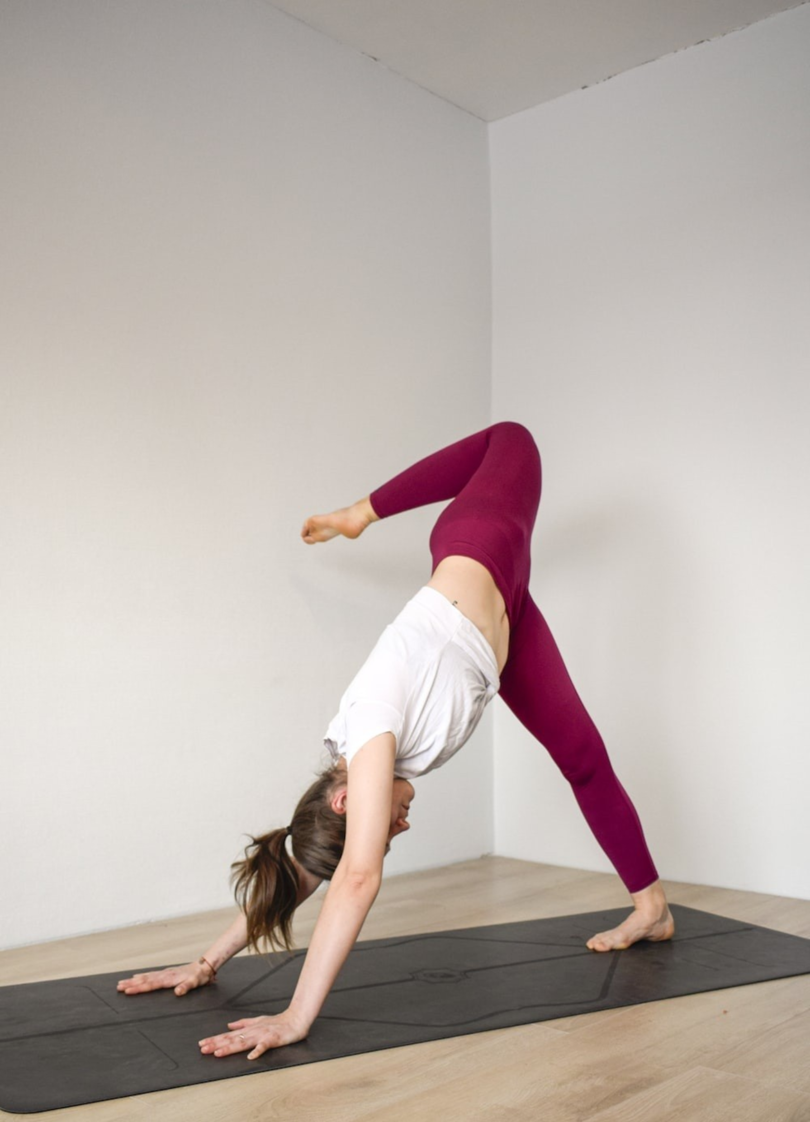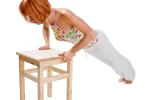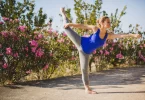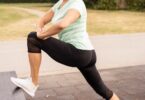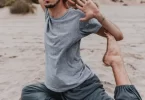Hip pain is a common complaint among seniors. Aging, injuries, arthritis, and other medical conditions can cause discomfort in the hips, making it difficult to move, walk, or perform daily activities.
Fortunately, there are natural remedies that can help alleviate hip pain and improve mobility, such as exercise, yoga, and other therapies. In this article, I will discuss the causes of hip pain, the benefits of exercise for hip pain relief, and how yoga can help seniors manage hip pain and improve their quality of life.
Understanding hip pain and its causes
The hip joint is a ball-and-socket joint that connects the thigh bone (femur) to the pelvis. It is a complex joint that supports the weight of the body and allows for a wide range of movement, such as walking, running, jumping, and bending. However, due to its constant use, the hip joint can wear down over time, leading to pain, stiffness, and inflammation.
Hip pain can have various causes, such as:
Osteoarthritis: a degenerative joint disease that can cause the cartilage in the hip joint to wear down, leading to bone-on-bone contact and pain.
- Rheumatoid arthritis: an autoimmune disease that can cause inflammation and pain in the joints, including the hip joint.
- Bursitis: an inflammation of the fluid-filled sacs (bursae) that cushion the hip joint, causing pain and swelling.
- Fractures: a break in the bones of the hip joint, which can be caused by falls, accidents, or osteoporosis.
Tendinitis: an inflammation of the tendons that attach muscles to bones, causing pain and stiffness in the hip joint.
The benefits of exercise for hip pain relief
Exercise is one of the most effective ways to relieve hip pain and improve mobility. Regular exercise can help strengthen the muscles around the hip joint, increase flexibility, reduce inflammation, and improve circulation. Exercise can also promote weight loss, which can reduce the pressure on the hip joint and alleviate pain.
Some of the benefits of exercise for hip pain relief include:
Strengthening the hip muscles: exercises such as squats, lunges, and leg lifts can help strengthen the muscles around the hip joint, improving stability and reducing pain.
Increasing flexibility: stretching exercises such as yoga and Pilates can help improve flexibility and range of motion in the hip joint, reducing stiffness and discomfort.
Reducing inflammation: low-impact exercises such as walking, swimming, and cycling can help reduce inflammation in the hip joint, improving pain and function.
Promoting weight loss: exercise can help burn calories and reduce body fat, which can relieve pressure on the hip joint and reduce pain.
Yoga as a natural remedy for hip pain
Yoga is a gentle and effective way to manage hip pain and improve mobility. Yoga combines physical postures (asanas), breathing techniques (pranayama), and meditation to promote relaxation, reduce stress, and improve overall health.
Yoga can also help stretch and strengthen the muscles around the hip joint, increasing flexibility and reducing pain. Some of the benefits of yoga for hip pain relief include:
Stretching the hip muscles: yoga poses such as pigeon, lizard, and butterfly can help stretch the muscles and tissues around the hip joint, reducing stiffness and pain.
Strengthening the hip muscles: poses such as warrior II, tree, and chair can help strengthen the muscles around the hip joint, improving stability and reducing pain.
Improving circulation: yoga poses such as downward dog and headstand can help improve circulation in the hip joint, reducing inflammation and discomfort.
Promoting relaxation: yoga can help reduce stress and promote relaxation, which can alleviate tension and pain in the hip joint.
Yoga postures for hips – gentle poses for seniors
Yoga can be a safe and effective way for seniors to manage hip pain and improve mobility. However, it is important to
choose gentle poses that are appropriate for your level of fitness and flexibility. Here are some yoga poses that can help stretch and strengthen the muscles around the hip joint, reducing pain and stiffness:
- Pigeon pose (Eka Pada Rajakapotasana): This pose stretches the hip flexors, glutes, and lower back, improving flexibility and reducing pain.
- Lizard pose (Utthan Pristhasana): This pose stretches the hip flexors, hamstrings, and groin, improving mobility and reducing pain.
- Butterfly pose (Baddha Konasana): This pose stretches the hip flexors, inner thighs, and groin, improving flexibility and reducing pain.
- Warrior II pose (Virabhadrasana II): This pose strengthens the hip muscles, improving stability and reducing pain.
- Tree pose (Vrikshasana): This pose strengthens the hip muscles and improves balance, reducing pain and preventing falls.
- Chair pose (Utkatasana): This pose strengthens the hip muscles, thighs, and calves, improving stability and reducing pain.
Yoga for hip arthritis – managing pain and improving flexibility
Hip arthritis is a common condition that can cause pain, stiffness, and inflammation in the hip joint. Yoga can be a safe and effective way to manage hip arthritis and improve mobility. Here are some yoga poses that can help relieve hip arthritis pain and improve flexibility:
- Cat-cow pose (Marjaryasana-Bitilasana): This pose stretches the spine and hips, improving mobility and reducing pain.
- Cobra pose (Bhujangasana): This pose stretches the hip flexors and strengthens the back muscles, improving posture and reducing pain.
- Downward dog pose (Adho Mukha Svanasana): This pose stretches the hips, hamstrings, and calves, improving flexibility and reducing pain.
- Bridge pose (Setu Bandhasana): This pose strengthens the hip muscles and stretches the spine, reducing pain and improving posture.
- Reclining hero pose (Supta Virasana): This pose stretches the hip flexors and thighs, improving mobility and reducing pain.
Hip flexor exercises for seniors – improving range of motion
The hip flexors are a group of muscles that allow you to bring your knee towards your chest and bend forward at the waist. Tight hip flexors can contribute to hip pain and reduce mobility. Here are some hip flexor exercises that can help seniors improve their range of motion and reduce pain:
- Seated butterfly stretch: Sit on the floor with the soles of your feet together. Gently press your knees towards the floor, feeling a stretch in your hips and groin. Hold for 30 seconds, then release.
- Supine leg lift: Lie on your back with your legs straight. Lift one leg towards the ceiling, keeping it straight and flexing your foot. Hold for 30 seconds, then lower and repeat on the other leg.
- Standing hip flexor stretch: Stand with one foot forward and one foot back. Bend your front knee and shift your weight forward, feeling a stretch in your hip flexor. Hold for 30 seconds, then switch legs.
Related Article: Yoga for Over 70s: Gentle Exercises for Health and Vitality
How to ease hip pain in the elderly – modifications for yoga poses
Yoga can be a safe and effective way for seniors to manage hip pain and improve mobility. However, it is important to modify the poses to suit your needs and abilities. Here are some modifications for yoga poses that can help ease hip pain in the elderly:
- Use props: Props such as blocks, blankets, and straps can help support your body and make the poses more comfortable.
- Take it slow: Move slowly and mindfully, paying attention to your body and avoiding pain or discomfort.
- Listen to your body: If a pose feels uncomfortable or causes pain, modify or skip it.
- Use a chair: Some poses can be done while sitting in a chair, making them more accessible and comfortable.
Additional remedies for hip pain – heat therapy, massage, and more
In addition to exercise and yoga, there are other natural remedies that can help alleviate hip pain and improve mobility. Here are some additional remedies for hip pain:
- Heat therapy: Applying heat to the hip joint can help reduce pain and stiffness. You can use a heating pad, or warm towel, or take a warm bath.
- Massage: Massaging the muscles around the hip joint can help reduce tension and improve circulation, reducing pain and stiffness.
- Acupuncture: Acupuncture involves the insertion of thin needles into specific points on the body, which can help reduce pain and inflammation.
- Chiropractic care: Chiropractors can perform adjustments to the spine and joints, which can help reduce pain and improve mobility.
- Supplements: Some supplements, such as glucosamine and chondroitin, can help reduce joint pain and improve mobility.
Exercises for hip pain for seniors – other exercises to try
In addition to yoga and hip flexor exercises, there are other exercises that can help seniors manage hip pain and improve mobility. Here are some exercises for hip pain for seniors:
- Walking: Walking is a low-impact exercise that can help improve circulation, reduce inflammation, and improve mobility.
- Swimming: Swimming is a low-impact exercise that can help strengthen the muscles around the hip joint, improving stability and reducing pain.
- Cycling: Cycling is a low-impact exercise that can help improve flexibility and reduce pain in the hip joint.
Conclusion – incorporating yoga into your pain management routine
Hip pain is a common complaint among seniors. However, there are natural remedies that can help alleviate pain and improve mobility, such as exercise, yoga, and other therapies. Yoga can be a safe and effective way for seniors to manage hip pain and improve their quality of life. By incorporating gentle yoga poses and modifications into your pain management routine, you can reduce pain, improve flexibility, and enjoy a more active and fulfilling life.
Related Article: Revitalize Your Body with Bed Yoga for Seniors: The Benefits of Using a Yoga Chair
CTA: If you are a senior experiencing hip pain, consider trying yoga as a natural and effective way to manage your symptoms. Consult with your doctor or a qualified yoga instructor to find a safe and appropriate practice for your needs and abilities.

